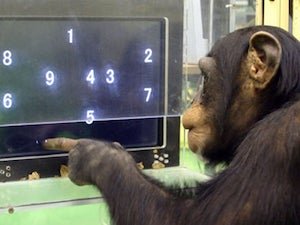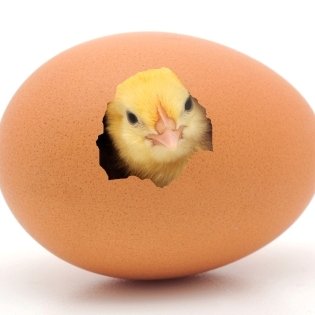SESSION 1
Animals that count
NOTE: hover over words in blue for additional information
Few scientists doubt that primates have a sense of number, and even distantly related animals, including salamanders, honeybees and newly hatched chicks, seem to have the knack, with some able to perform basic arithmetic. What's more, the skills of this growing mathematical menagerie resemble our own innate abilities. Could basic mathematics have evolved hundreds of millions of years ago?
Of course, without language or a precise symbolic system to represent numbers, animal numerical abilities will never reach human levels. No chimpanzee will ever learn long division, but with enough practice almost any human can master the challenge. So to put humans and animals on an equal footing, we need to look at more basic numerical faculties.

Chimpanzee doing math.
Image from theguardian.co.uk.
STRUCTURE
- Introduction to the course
- Reading
- Animals that count
- Exercises
- True/False
- Vocabulary

